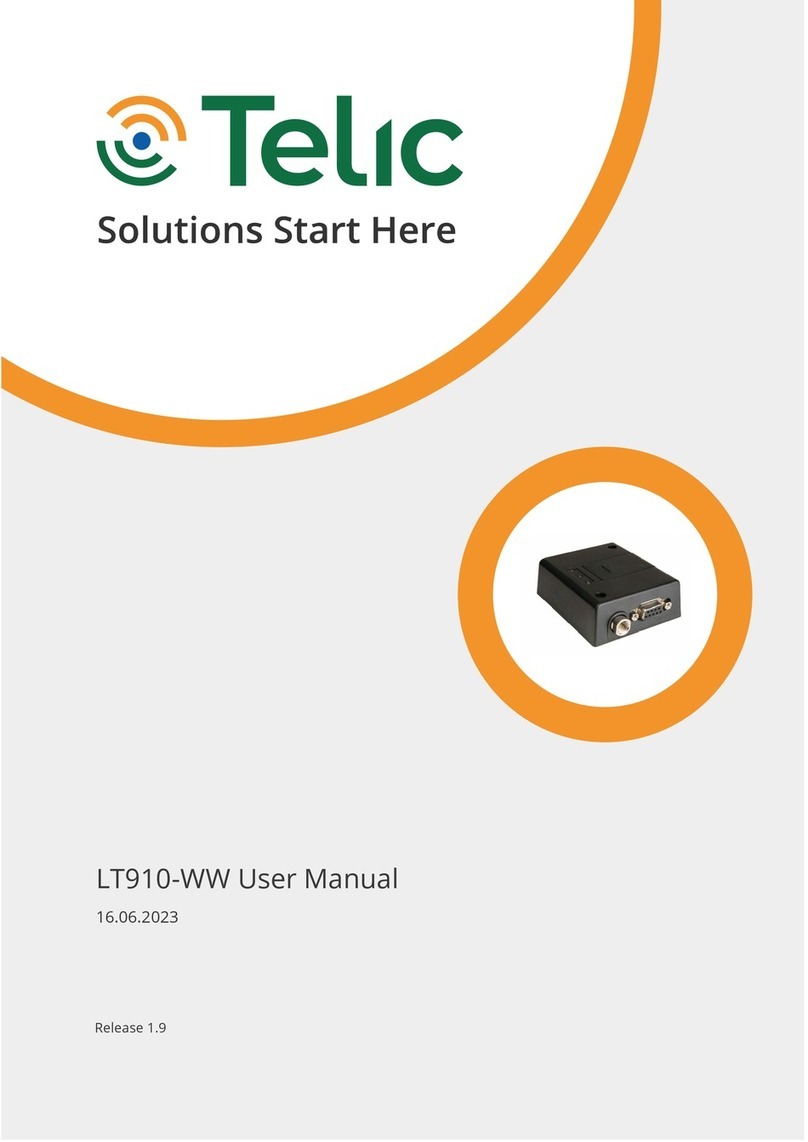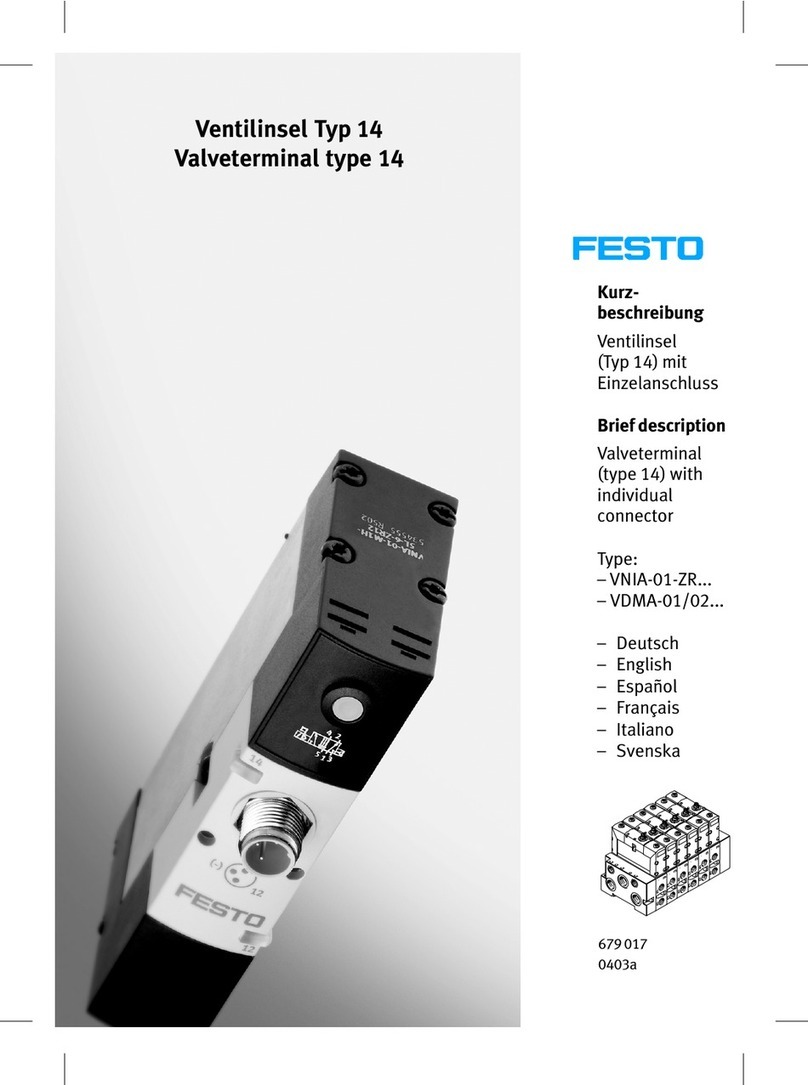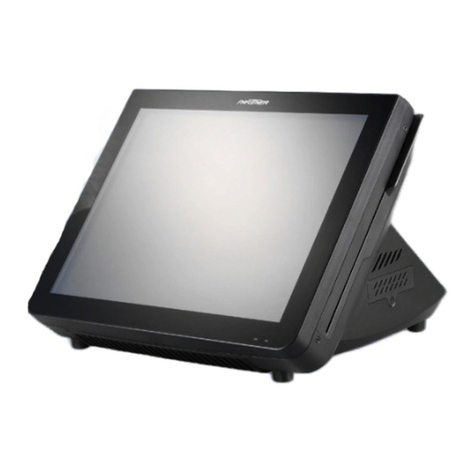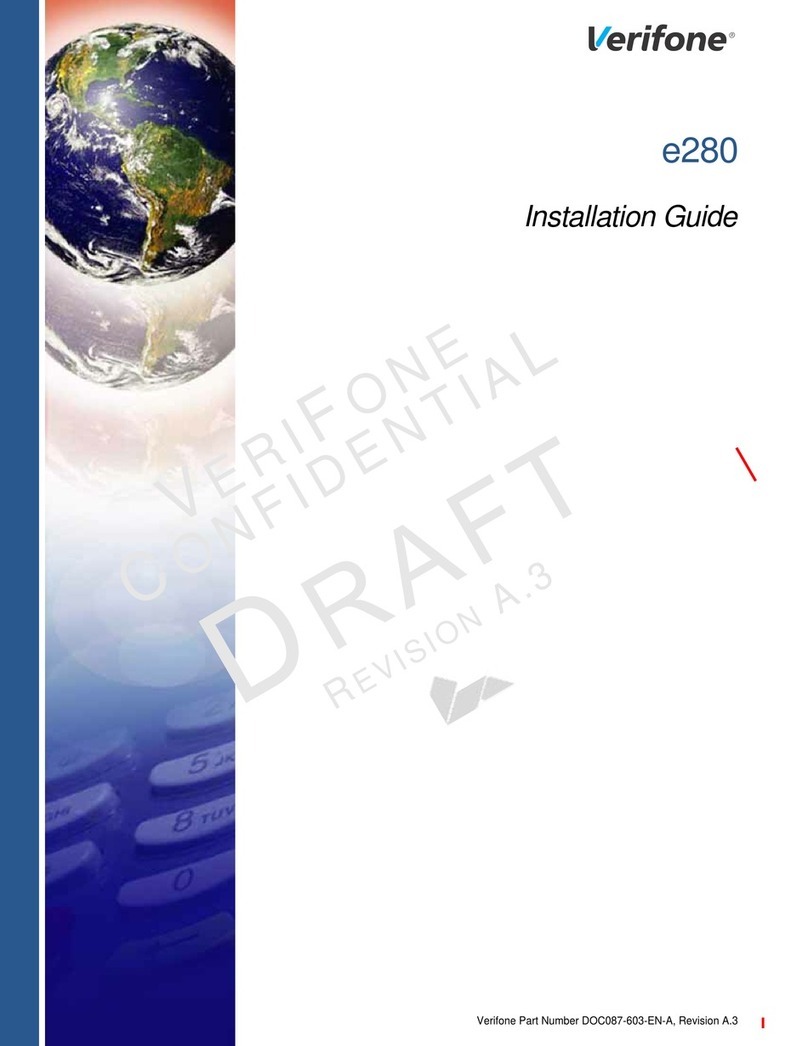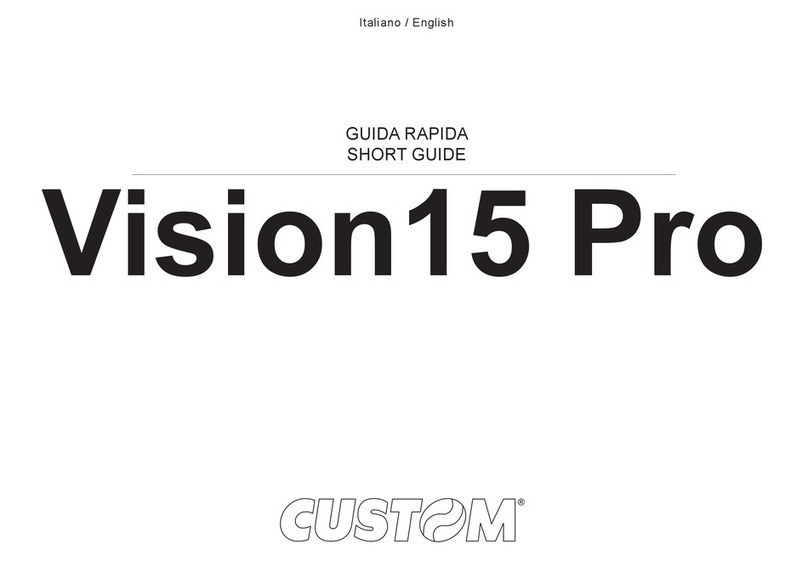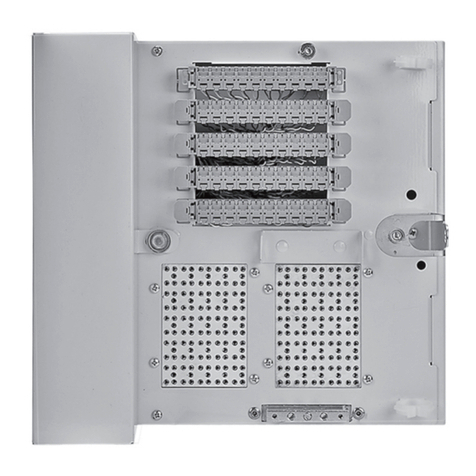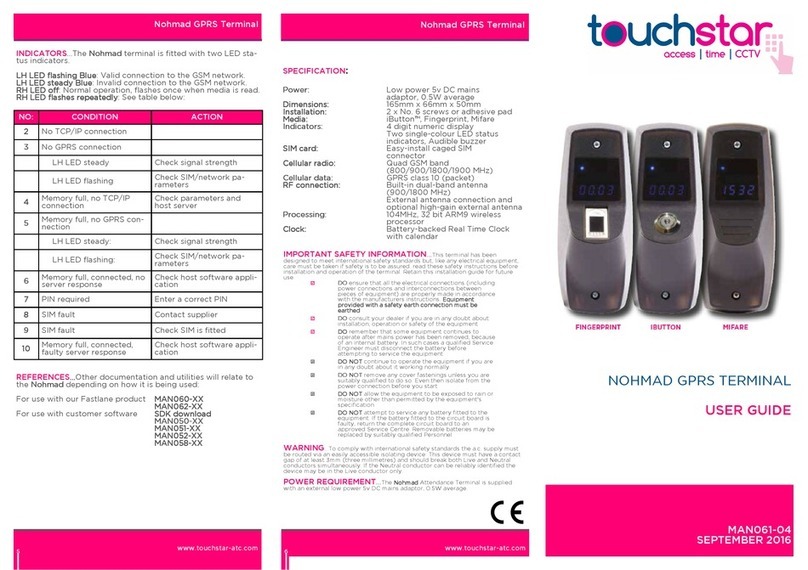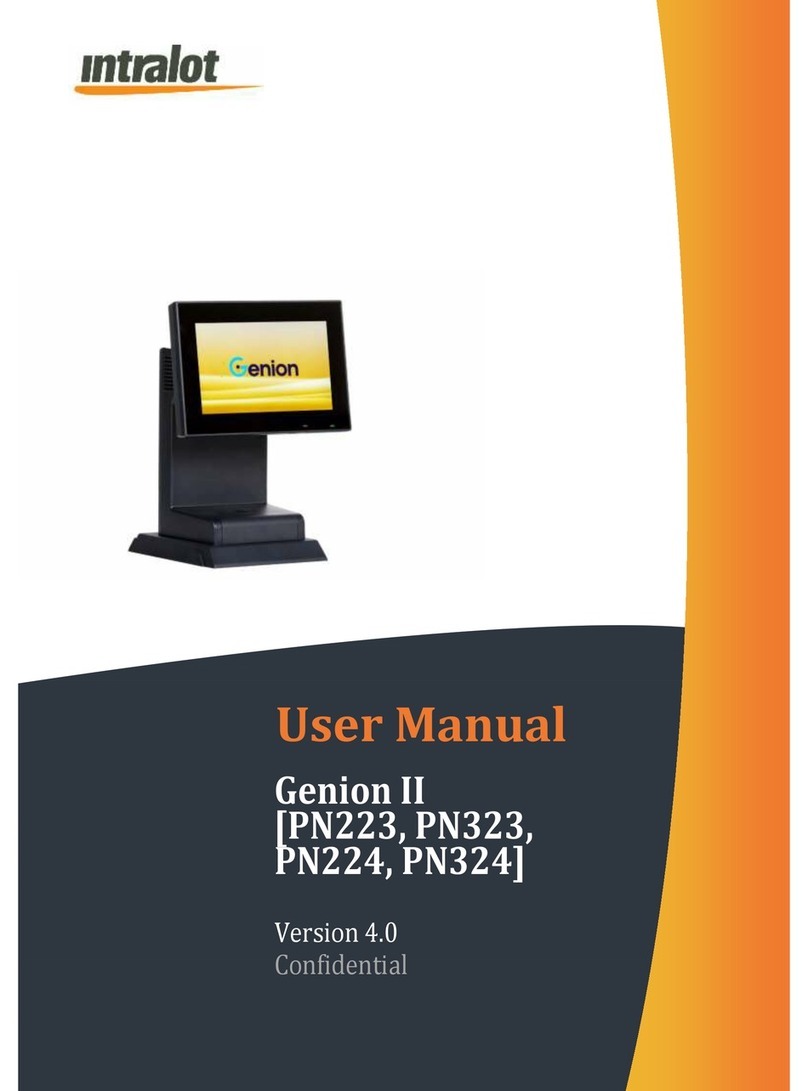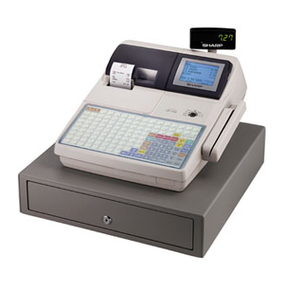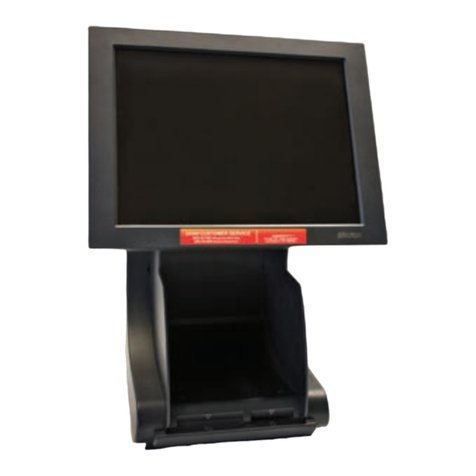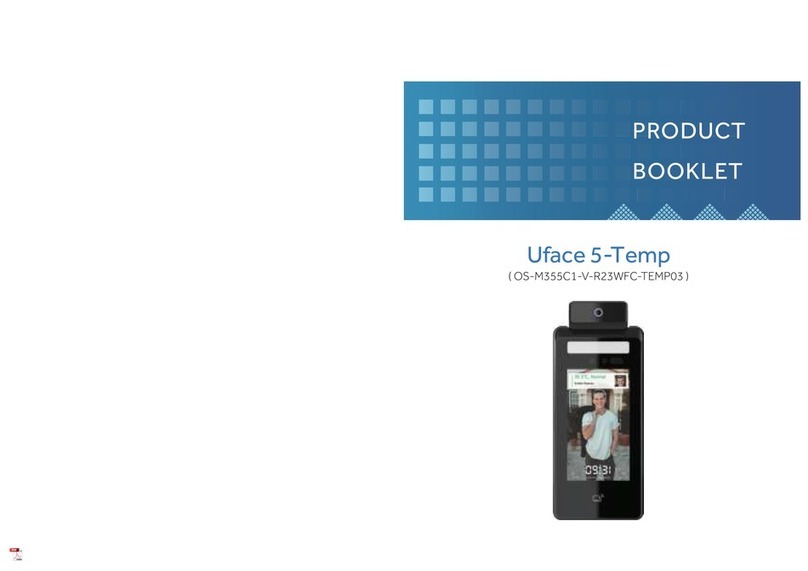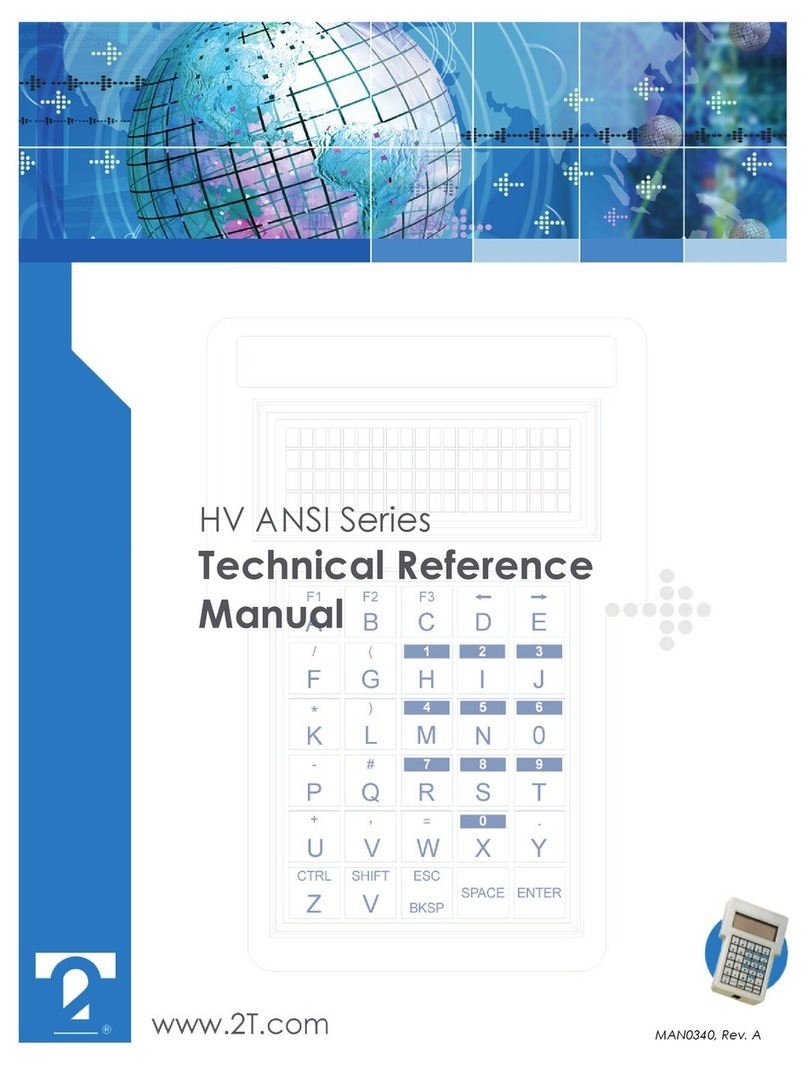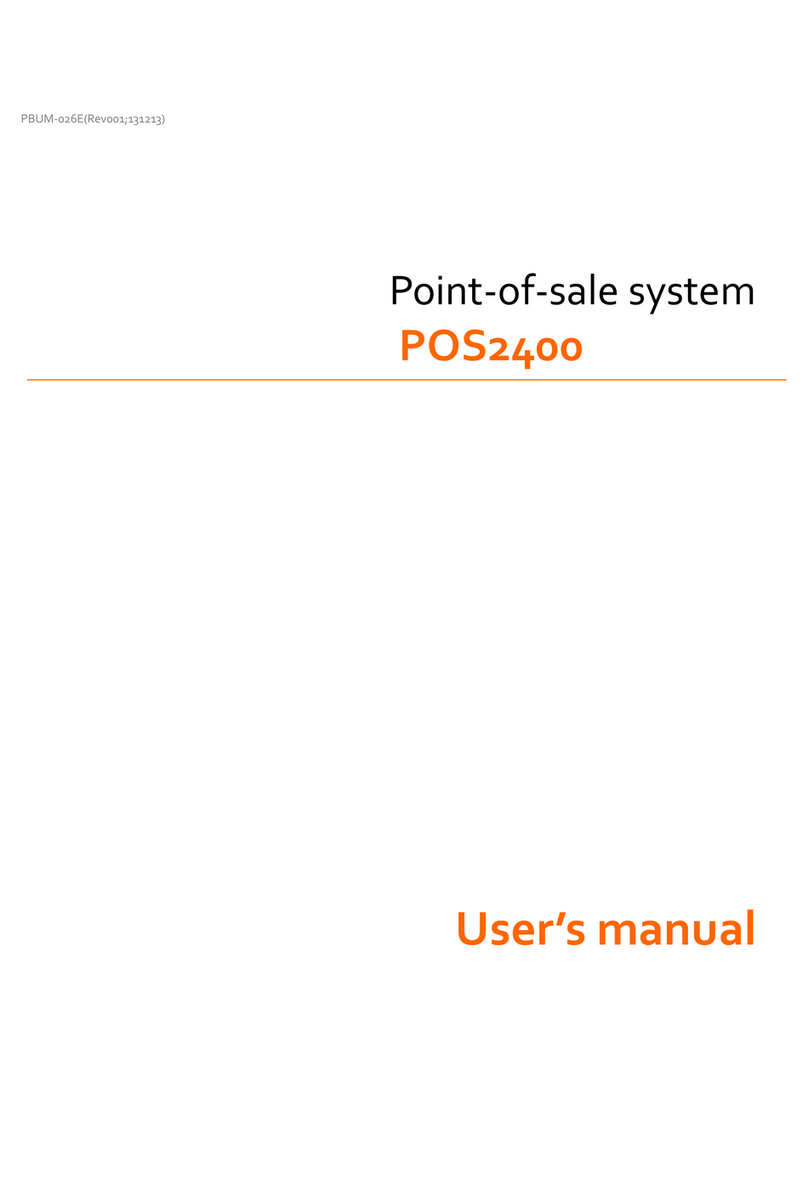Telic NT910G User manual

NT910G User Manual
31.01.2020
Release 1.0

Contents
1General Terms and Conditions...............................................................................3
1.1 General Information .................................................................................................................................................3
1.2 Contact for Support..................................................................................................................................................3
1.3 Conventions used in this Manual........................................................................................................................4
1.4 Related Documentation..........................................................................................................................................4
1.5 Abbreviations ..............................................................................................................................................................4
1.6 Revision History..........................................................................................................................................................5
2Product Description ....................................................................................................5
2.1 Overview .......................................................................................................................................................................5
Please note the following:.................................................................................................................................................6
2.2 Identification................................................................................................................................................................7
2.3 Physical Dimensions and Weight ........................................................................................................................7
2.4 Product Features and Technical Data................................................................................................................8
2.5 Telic Certified Accessories......................................................................................................................................9
3Safety and Product Care......................................................................................... 11
3.1 Audience and Intended Use............................................................................................................................... 12
3.2 Safety instructions..................................................................................................................................................12
3.3 General precautions .............................................................................................................................................. 13
3.4 SIM card precautions ............................................................................................................................................14
3.5 Antenna precautions.............................................................................................................................................14
3.6 Storage Conditions ................................................................................................................................................ 14
4Electrical Description ............................................................................................... 15
4.1 Power Connector ....................................................................................................................................................15
4.2 Antenna Connector................................................................................................................................................16
4.3 SIM card reader.......................................................................................................................................................17
4.4 RS232 Serial Port ....................................................................................................................................................17
4.4.1 Serial Data.................................................................................................................................................................. 17
4.5 Mini USB Connector ..............................................................................................................................................18
5Operation ..................................................................................................................... 18
5.1 Switch ON the modem.........................................................................................................................................18
5.2 Configuration of the bit rate on the serial interface.................................................................................19
5.3 Power cycle the modem ......................................................................................................................................19
5.4 Using low power mode of the modem..........................................................................................................20
5.4.1 Enabling the low power mode .......................................................................................................................... 20
5.4.2 Disabling the low power mode by user ......................................................................................................... 21
5.4.3 Disabling the low power mode upon receiving GSM activity............................................................... 21
5.5 Operating states / green LED ............................................................................................................................21
5.6 Status LEDs (one yellow, one red)....................................................................................................................22
5.7 Current consumption Measurements............................................................................................................. 22

NT910G User Manual - Telic AG
Pg 2
5.8 Additional Software Configuration..................................................................................................................23
5.8.1 Activating / Deactivating LTE Mode................................................................................................................ 23
5.8.3 Configuring specific frequency band.............................................................................................................. 23
6Installation of the modem..................................................................................... 23
6.1 Where to install the modem ..............................................................................................................................23
6.1.1 Environmental conditions.................................................................................................................................... 23
6.1.2 GSM Signal strength.............................................................................................................................................. 24
6.1.3 Connection of components to the NT910 G Terminal............................................................................. 24
6.1.4 Network and Subscription................................................................................................................................... 24
6.2 How to install the modem .................................................................................................................................. 24
6.2.1 Power supply ............................................................................................................................................................ 24
6.2.2 Securing the modem............................................................................................................................................. 24
6.3 Antenna ......................................................................................................................................................................25
6.3.1 General........................................................................................................................................................................ 25
6.3.2 Antenna type ............................................................................................................................................................ 25
6.3.3 Antenna placement................................................................................................................................................ 25
6.3.4 The antenna cable .................................................................................................................................................. 25
6.3.5 Possible communications disturbances......................................................................................................... 26

NT910G User Manual - Telic AG
Pg 3
1General Terms and Conditions
This technical description contains important information for the installation and use of the NT910G
Terminal. Read it carefully before you start working with the NT910G Terminal.
We cannot be held responsible for material loss or personal injury that is due to non-compliance with
the safety instructions. The warranty will be void in such circumstances.
Telic reserves the right to change the included information without prior notice and does not take
responsibility for errors in the document and/or for any missing information.
1.1 General Information
This Installation Manual consists of the following chapters:
Chapter
Description
1
General Information provides basic information such as the conventions for the warning
levels, applicable related documentations, used abbreviations, a revision history and
contact information.
2
Product Description provides a brief overview about the mechanical specification of the
product (including size and weight) as well as an overview of the functions and features
of the device as well as the available accessories.
3
Safety and Product Care addresses the audience for this manual, the indented use of
this device and safety-related information important to read before using the device.
4
Electrical Description describes the electrical characteristics and pin allocation of the
device’s connectors.
5
Operation provides details relating to the commissioning of the device, including
details on activating special features such as the low power mode.
6
Installation of the modem provides important instructions about how to install the
device for the M2M application.
1.2 Contact for Support
Please submit your request to TELIC AG customer support using the following online form:
https://www.telic.de/en/contacts/support-request
Information about Telic AG, products and accessories, including FAQs, are available from the following
web site: http://www.telic.de.

NT910G User Manual - Telic AG
Pg 4
1.3 Conventions used in this Manual
The following conventions for warning levels are used in this manual:
Warning
Warnings against hazards that may result directly in serious injuries or death in case of
non-observance.
Caution
Warnings against hazards that may result in injuries in case of non-observance.
NOTICE
Warnings against hazards that may result in material damage in case of non-observance.
Indicates that the device can be damaged by electrostatic discharge.
This note contains helpful suggestions or references to material not covered in
the document.
1.4 Related Documentation
Please consult the download zone of the Telic AG website for additional documents related to LT910 E,
such as AT command manuals. Note that such type of documents can be accessed online only after
you have registered on our website and agreed with our terms of use. Please follow this link to register
for a user account:
http://www.telic.de/en/nda-reg-form
Use the following link to login if you already have a valid user account:
http://www.telic.de/en/en-login
1.5 Abbreviations
Abbreviation
Explanations
CSD
Circuit Switched Data
DCE
Data Circuit Terminating Equipment
DTE
Data Terminal Equipment

NT910G User Manual - Telic AG
Pg 5
GPRS
General Packet Radio Service
GSM
Global System for Mobile Communication
ME
Mobile Equipment
MO
Mobile Originated
MS
Mobile Station
PDU
Protocol Data Unit
RF
Radio Frequency
SIM
Subscriber Identity Module
SMS
Short Message Service
TA
Terminal Adapter
TE
Terminal Equipment
TS
Telecom Services
Table 1: Abbreviation
1.6 Revision History
Revision
Date
Changes
1.0
31.01.2020
Initial version
Table 2: Documentation Change Log
2Product Description
2.1 Overview
The pictures below show the mechanical design of the NT910G Terminal along with the positions of
the different connectors and mounting holes. The NT910G Terminal case is made of durable PC/ABS
plastic.

NT910G User Manual - Telic AG
Pg 6
Figure 1: Connector on rear side of the Terminal
Figure 2: Connectors on front side of the Terminal
PLEASE NOTE THE FOLLOWING:
▪The terminal can be securely fitted into your application by using the mounting holes
positioned at the two corners of the device.
▪The SIM card can be inserted into the modem without the need for any tools.
▪Section 4 Electrical Description“2. Electrical Description” describes the pins and electrical
characteristics or of the modem’s terminal’s various connectors are described in
▪Section 4.2 Antenna Connector“2.3 Antenna Connector” provides information about the
antenna connector is found in “2.3 Antenna Connector”

NT910G User Manual - Telic AG
Pg 7
Special DIN Rail Mounting Brackets (Art-nr. 12304 or Art-nr. 12305) is available as an
accessory item which allows installation of the modem in industrial environments using DIN
Rails. For more details of our accessories please check chapter 2.5 Telic Certified Accessories.
2.2 Identification
On the bottom of the device, you will find the type label.
2.3 Physical Dimensions
and Weight
Overall dimensions: 77 x 66 x 26 mm
Weight: 91g
1
Note that the serial number consists of a 4-digit product ID followed by the device’s IMEI.
Label
Description
S/N
Serial number1
Serial number
IMEI
International Mobile Equipment
Identity
HW-Rev.
Hardware Revision Number
CE
CE Verification mark
Disposal in accordance with
European Directive RED
2014/53/EU

NT910G User Manual - Telic AG
Pg 8
Figure 3: Drawing of the Terminal’s Housing
2.4 Product Features and Technical Data
NOTICE
Telic AG may, at any time and without notice, make changes or improvements to the products
and services offered and / or cease producing or commercializing them.
NOTICE –Optional Features
Features identified as “Optional” in this document are not assembled by default. Please contact
our Sales Team at https://www.telic.de/en/contacts/contact-us to clarify the details of ordering
terminal variants.
Category
Features
Details
Air Interface
GSM Frequency Bands
LTE Frequency Bands
B2(1900) / B3(1800) / B5(850) / B8(900)
B1(2100) / B2(1900) / B3(1800) /
B4(AWS1700) / B5(850) / B8(900) /
B12(700) / B13(700) / B18(800) /

NT910G User Manual - Telic AG
Pg 9
B19(800) / B20(800) / B26(850) /
B28(700)
Hardware Features
IP Protection
IP40
SIM Card Holder
1x (1,8/3 Volt)
Size: 25 x 15 mm
Mini-SIM, Form Factor: 2FF
SIM Chip Option: Yes
LEDs
1x Mobile communications 2x
Configurable
Type Approvals
CE
Connectors
D-Sub (9-pin)
1x Female (RS232)
USB
1x Mini-USB (USB 2.0)
RJ11
1x Power + IOs (1x Analogue Input; 1x
Output
RS232
1x (Sub-D9 Female)
USB 2.0
1x (Mini-USB) (USB 2.0)
Software
AT Command Set
3GPP TS 27.005, 27.007 and
Telit custom AT
Programming
Language
C (Telit AppZone IDE)
SIM Application
Toolkit
SAT Release 99
TCP/IP Stack
TCP, UDP, SSL
Pv4/IPv6 stack with TCP and UDP
protocol
SW Update
Serial / USB / FOTA
Power Management
Voltage Range
5V - 32V direct current
Hardware Characteristics
Operating
Temperature
-30°C to +75°C
Dimensions
77 x 66 x 26 mm
Weight
91g
Table 3: Feature Overview
2.5 Telic Certified Accessories
NOTICE
The pentaband antennas listed in this section are suitable both for use with GSM and LTE
networks. Please check, though, which frequency bands your mobile network service provider
supports specifically for LTE Cat-1. Eventually, you might need to purchase a dedicated antenna
to cover the 2600 MHZ band. Please contact us if you require specific recommendations on
suitable antennas to use.

NT910G User Manual - Telic AG
Pg 10

NT910G User Manual - Telic AG
Pg 11
Table 4: Accessories List
Please contact your distributor or Telic AG for availability or check Telic’s webpage http://www.telic.de.
3Safety and Product Care
This device has been designed in accordance with industrial standards, manufactured with utmost care
using high-quality materials, and thoroughly tested. Nevertheless, its use may constitute a risk to
persons or cause material damage.
The following safety instructions must be followed to ensure the safety of users and of the device.
NOTICE

NT910G User Manual - Telic AG
Pg 12
If these instructions are ignored, Telic AG will not assume responsibility for any damages that are
incurred. Telic AG may refuse warranty claims where evidence of product misuse is found.
Please read the information in this section and the information in Section 6 Installation of the modem
before starting your integration work!
3.1 Audience and Intended Use
This terminal product is targeted towards system integrators who need to add a wireless
communications link to their M2M / IoT application to capture data from the application as well as to
remotely control that application. Any other use is not intended.
3.2 Safety instructions
PLEASE READ THESE SAFETY INSTRUCTIONS AND KEEP A COPY OF THEM.
The NT910 G Terminal contains highly integrated components which can be damaged by electrostatic
discharge if the user would open the housing.
Therefore, only touch the NT910 G Terminal on the housing or connectors and avoid touching
the components on the board.
▪Always ensure that the use of the modem is permitted. The modem may present a hazard if
used in the proximity of personal medical electronic devices. As a rule, the modem must not
be used in hospitals, airports or planes.
▪Never use the modem at a gas station, refueling point, blasting area or in any other
environment where explosives may be present.
▪Operating the modem close to other electronic devices, such as antennas, television sets, and
radios may cause electromagnetic interference.
▪This product is intended to be used with the antenna or other radiating element at least 20 cm
away from any part of the human body. In applications where this rule cannot be applied, the
application designer is responsible for providing the SAR measurement test report and
declaration.
▪You are responsible for observing your country's safety standards, and where applicable, the
relevant wiring rules.
Warning
When using products which are exposed to electric voltage the valid regulations have
to be observed.
Always make sure that the device is disconnected from the power supply before opening it.

NT910G User Manual - Telic AG
Pg 13
You should only use tools on components, modules or devices if they are disconnected from the
power supply and the electric charge, which may still be stored in some components inside the device,
has been discharged.
All cables and wires which are energized and connected to the device, the module or components
must be checked regularly for any damage of the isolation shield or fractures of the cables. If the
supply cables are visibly damaged the device must be taken out of operation immediately until the
faulty cable has been replaced.
When using components or modules, the specification given in the corresponding description of these
components must strictly be observed. The device shall be operated only by appropriately qualified
personnel.
This device shall only be used for its intended purpose.
Please note that we are not responsible for any errors in usage of wireless connections. Therefore, we
cannot accept any responsibility for consequential loss.
In case measurements with the opened housing are necessary, an isolating-transformer must be
integrated for safety reasons. Alternatively, the voltage can be supplied by an appropriate power
supply which complies with the safety regulations. All wiring work must be done in a voltage free state
only.
3.3 General precautions
The NT910 G Terminal as a stand-alone item is designed for indoor use only. To use outside it must be
integrated into a weatherproof enclosure. Do not exceed the environmental and electrical limits as
specified in Section 2.4 Product Features and Technical Data.
▪Avoid exposing the modem to lighted cigarettes, naked flames or to extreme hot or cold
temperatures.
▪Never try to dismantle the modem yourself. There are no components inside the modem that
can be serviced by the user. If you attempt to dismantle the modem, you will invalidate the
warranty.
▪The NT910 G Terminal must not be installed or located where the surface temperature of the
plastic case may exceed 75°C.
▪All cables connected to the NT910 G Terminal must be secured or clamped, immediately
adjacent to the modem's connectors, to provide strain relief and to avoid transmitting
excessive vibration to the modem in the installation.
▪Ensure the cables, supplying power, and input cable to the NT910 G Terminal do not exceed 3
meters.
▪To protect power supply cables and meet the fire safety requirements when the unit is
powered from a battery or a high current supply, connect a fast 1.25A fuse in line with the
positive supply.
▪Do not connect any incompatible component or product to the NT910 G Terminal.

NT910G User Manual - Telic AG
Pg 14
3.4 SIM card precautions
Before handling the SIM card in your application, ensure that you are not charged with static
electricity. Use proper precautions to avoid electrostatic discharges.
When the SIM card hatch is opened, the SIM card connectors lie exposed under the SIM card holder.
Caution! Do not touch these connectors! If you do, you may release an electrical discharge
that could damage the modem or the SIM card.
When designing your application, the SIM card’s accessibility should be considered. We always
recommend that you have the SIM card protected by a PIN code. This will ensure that the SIM card
cannot be used by an unauthorized person.
3.5 Antenna precautions
Consider the risk of lightning in case the antenna is to be mounted outside. Follow the instructions
provided by the antenna manufacturer.
NOTICE
Please note that this LTE device is designed for use with one single antenna only. It does not
support antenna diversity.
▪Never connect more than one modem to a single antenna. The modem can be damaged by
radio frequency energy from the transmitter of another modem.
▪Like any mobile station, the antenna of the modem emits radio frequency energy. To avoid
EMI (electromagnetic interference), you must determine whether the application itself, or
equipment in the application’s proximity, needs further protection against radio emission and
the disturbances it might cause. Protection is secured either by shielding the surrounding
electronics or by moving the antenna away from the electronics and the external signals cable.
▪The modem and antenna may be damaged if either come into contact with ground potentials
other than the one in your application. Beware, ground potential is not always what it appears
to be.
3.6 Storage Conditions
The following environmental limits must be maintained in order to safely store the terminal and ensure
that it remains functional until a maximum of 12 months:
▪Storage temperature: from 5°C to 35°C
▪Humidity: <75% relative humidity.

NT910G User Manual - Telic AG
Pg 15
4Electrical Description
The modem uses the following standard connectors:
▪RJ11 6-way (power + 1 analogue input + 1 optional output)
▪Mini USB (for data) –Also the power connector for the USB powered variant (optional)
▪SIM card reader
▪FME male coaxial jack (antenna connector)
▪Sub-D female socket, 9 pin (RS232 serial port)
4.1 Power Connector
An RJ11 6-way connector, as shown and described below, serves as a means of supplying and
controlling DC power to the modem. The use of an external power supply is necessary as the USB port
is not intended to be used as power source.
The supply voltage VCC required by the modem is 5V - 32V DC. Please note that applying the supply
voltage does not switch the modem on. To do so an additional active-high control signal, TO_IN, must
be applied for > 1 second.
Please see chapter 5.1 Switch ON the modem for further important details about TO_IN and power
supply requirements, especially if TO_IN is applied in parallel to VCC.
VCC and GND are reverse-polarity and over-voltage protected as long as the antenna
interface and the user’s application are not used or connected to separate grounds.
Figure 4: RJ11 Pin Connector
Pin
Signal
Direction
Limits
Description
1
VCC
Input
5 –32V
Positive power input, DC
2
ADC_IN
Input
0-32V
Analogue Input

NT910G User Manual - Telic AG
Pg 16
3
EMERG_OFF
Input
5 –32V
Active high control line used to switch off the
terminal
VIH > 5V, VIL < .5V
Power off: t >1s
4
TO_IN
Input
5 –32V
Positive edge triggered signal; used to switch on the
modem
VIH > 5V, VIL < 0.5V
Power on: t >1s after VCC available
VIH = Voltage Input high
VIL = Voltage Input low
5
DIG_OUT
Output
5 - VCC
(Optional) Digital Output VCC, max. 400 mA
6
GND
Input
-
Negative power (ground) input and return path for
TO_IN and EMERG_OFF
Table 5: RJ11 Pin and Signals Description
4.2 Antenna Connector

NT910G User Manual - Telic AG
Pg 17
4.3 SIM card reader
The Terminal is fitted with a SIM card reader designed for 1.8V and for 3V SIM cards. It is the flip-up
type which is lockable in the horizontal position and is accessed through a removable panel.
Mini-SIM: Form Factor: 2FF - 25 x 15 mm.
4.4 RS232 Serial Port
The modem supports a standard RS232 serial interface via its 9 pin Sub-D connector, shown below. In
line with serial communication terminology the Terminal should be considered as the data circuit-
terminating equipment (DCE) and the external application or computer as the data terminating
equipment (DTE). The maximum data rate to communicate with the NT910 G Terminal is 921,6 kBaud.
Pin
Signal
Direction
Limits
Description
1
DCD
Output
> + 4V
<- 4 V
Data carrier detect
2
RD
Output
> + 4V
<- 4 V
Received data
3
TD
Input
> + 2,4V
< 0.8 V
Transmitted data
4
DTR
Input
> + 4V
< 0.8 V
Data terminal ready
5
GND
-
0 V
Ground connection
6
DSR
Output
> + 4V
< - 4 V
Data set ready
7
RTS
Input
> + 2,4V
< 0.8 V
Request to send
8
CTS
Output
> + 4V
< - 4 V
Clear to send
9
RI
Output
> + 4V
< - 4 V
Ring indicator
Table 6: Electrical characteristics of the serial port signals
4.4.1 SERIAL DATA
The modem supports the standard data character format of
▪Standard data rate is 115200 baud
▪Programmable baud rate
▪Auto-configuration mode

NT910G User Manual - Telic AG
Pg 18
4.5 Mini USB Connector
Figure 5: Mini USB Type A/B connector gives an overview about the PIN Assignment of the Mini USB
connector from the Standard NT910 G Terminal and also of the NT910 G USB Powered version (host
powered). The Pin Assignment of the two versions is the same.
The modem supports a standard USB 2.0 Full Speed slave interface to receive AT-commands as well as
data transmissions.
Drivers for Windows Desktop, Windows CE Embedded and instructions for Linux are available for
download from the Telic AG website (for registered users only).
Figure 5: Mini USB Type A/B connector for NT910 G
5Operation
5.1 Switch ON the modem
NOTICE
To ensure correct operation of the Terminal, please ensure that a SIM Card has been inserted
into the terminal prior to switching it on.
Do not insert a SIM card into the device while it is switched on. If you find out that the device is
switched on but missing a SIM card, first switch off the modem and then insert the SIM card.
Note that the device does not have a SIM card detect feature.
There are two ways to switch on the modem, once power is applied:
▪assert TO_IN to high level for > 5s
▪activate the RS232 control line DTR for >0.2s

NT910G User Manual - Telic AG
Pg 19
The modem is fully operational after 8 seconds. Logging onto a network may take longer than this and
is outside the control of the modem. The modem can be configured to start up at the time power is
applied by permanently tying power connector signals TO_IN (pin 4) and VCC (pin 1) together.
DTR must be cycled from low to high.
The TO_IN signal requires a positive “edge” (a sharp” signal transition from low to high) to
turn the modem on. This transition should be a rising signal from 0V (GND) to VCC, or at least
a large fraction of that voltage range, and must be applied at the same time as VCC or after it.
Very slow transitions (significantly slower than many milliseconds) or very small transitions
(e.g. only few volts instead of 0V to VCC) will not turn on the module (since they are not
considered to be a “positive edge”).
Although this will not be an issue in almost all typical applications of the modem, there are a few cases
in which the modem might not recognize the power up signal. This is no failure of the modem itself,
the same would apply to almost any electronic device that provides a separate “power on” or “reset”
signal.
Possible cases are the following:
▪Large capacitors in your power supply which will lead to slow leading and falling edges (issue
does not apply with modern stabilized switching regulator power-adaptors) AND TO_IN tied in
parallel to VCC (instead of separate dedicated digital signal)
▪Slow analogue signals used to assert TO_IN
▪TO_IN signal not before VCC
If you are in doubt, please
▪Use the mains power adapter that is provided by your distributor and is known to work
properly with your modem.
▪Make sure that your signal and system design is according to the above.
▪Consult our support team that will be more than happy to assist you.
5.2 Configuration of the bit rate on the serial interface
Please note that the module used in the terminal does not support auto baud. The configured data
rate is 115200 baud.
▪Data bits: 8
▪Stop bits: 1
▪Parity: none
5.3 Power cycle the modem
There are two ways to switch off (power down) the modem as described below:
Table of contents
Other Telic Touch Terminal manuals
